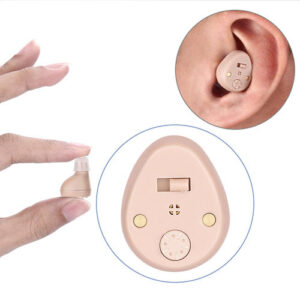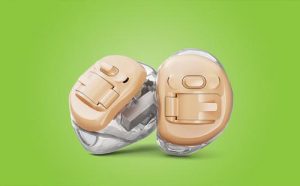Due to the popularity of newborn hearing screening in China, many hearing-impaired children can be diagnosed with hearing problems shortly after birth, and hearing aids can be used X months before 6 months. However, the ears of infants and young children are not yet mature, which brings many difficulties to hearing aid fitting. Compared with other age groups, infant hearing aid fitting, there is no uniform procedure, each place has its own method, it is difficult to define the success of infant hearing aid fitting.

To this end, the acoustic bridge hearing aid experts recommend three key points:
First, the identification of hearing conditions in infants and young children. Although the behavioral audiometry results are accurate, only electrophysiological methods are used for infants under the age of 6 months. Usually we use short-ABR (click ABR), short-tone ABR (toneburst ABR) and multi-frequency steady-state evoked potential (ASSR). Proper use of these methods can obtain a relatively accurate hearing threshold for infants and young children. The Chinese Audiology Network received a report from the reporter, Ms. Zhang Wei, explaining that the most important thing is to understand the application of the correction factor when converting the electrophysiological response threshold and the hearing threshold. The correction factor refers to the number of decibels that need to be subtracted from the ABR reaction threshold to the behavioral listening threshold. In general, the electrophysiological response threshold is higher than the behavioral listening threshold by 5~20dB. The low frequency 500Hz needs to be subtracted from 20dB, while the high frequency 4000Hz only needs to be subtracted from 5dB. For example, the ABR threshold obtained in 500Hz with a short pure tone is 60dBnHL, and the converted hearing threshold is 40dBHL (60-20=40dB). In this way, the hearing threshold of infants and young children can generally be obtained, which becomes the basis of hearing aid fitting.
Second, the unique acoustic characteristics of the infant ear canal must be fully considered. We know that the smaller the ear canal, the greater the intensity of the sound may produce greater resonance, that is, if we follow the 2cc indicator of the hearing aid provided by the manufacturer, the 90% situation will lead to excessive amplification, and the infant is uncomfortable. I don’t want to bring hearing aids, even affecting children’s hearing. The best way to solve this problem is to test the true ear coupling cavity difference (RECD) of infants and young children. China Audiology Network believes that testing RECD is very important and is one of the most important factors to ensure the success of hearing aid fitting.
After obtaining the RECD value of the infant, the third factor is the evaluation of the effect of the hearing aid after fitting. Generally in the evaluation, we can use the hearing aid analyzer to use the probe microphone for real ear testing. The purpose of the assessment is several. The first is to ensure that after the baby is put on the hearing aid, the indicators can be basically satisfied, such as gain, maximum output, etc.; then see if the hearing aid can most effectively amplify the speech sound, the comfort of the hearing aid does not equal It is very clear that these need to be constantly evaluated and debugged. Finally, it is necessary to judge whether the function of the hearing aid is suitable for children, such as directional microphone, multi-memory hearing aid, wind noise reduction function and so on. These features are not useful for all infants and young children and must be decided on a case-by-case basis.
In short, the acoustic bridge hearing aid expert believes that the successful infant hearing aid fitting meets at least the above three conditions. Of course, there are other factors that need to be considered, such as inconsistent hearing loss in infants and children, and re-vibration. Therefore, the infant hearing aid fitting is essentially a continuous, gradual and systematic process.
Jinghao medical hearing aid reminder: hearing aids need to be professionally “fitted”, it is very important to choose a professional hearing aid fitting center and hearing aid fittings! All patients and friends have any hearing problems can call the Jinghao medical consultation, or personally Come to the fitting center experience. Hearing aid free consultation phone: +86-18566295705
You can also scan our WeChat public account for more information about hearing.




